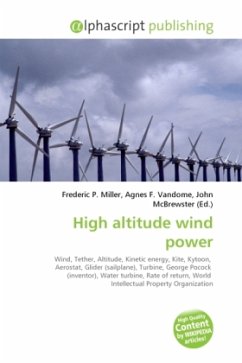High altitude wind power (HAWP) has been imagined as a source of useful energy since 1833 with John Etzler's vision of capturing the power of winds high in the sky by use of tether and cable technology. An atlas of the high altitude wind power resource has been prepared for all points on earth. Various mechanisms are proposed for capturing the kinetic energy of winds such as kites, kytoons, aerostats, gliders, gliders with turbines for regenerative soaring, sailplanes with turbines, or other airfoils, including multiple-point building- or terrain- enhanced holdings. Once the mechanical energy is derived from the wind's kinetic energy, then many options are available for using that mechanical energy: direct traction, conversion to electricity aloft or at ground station, conversion to laser or microwave for power beaming to other aircraft or ground receivers. Energy generated by a high-altitude system may be used aloft or sent to the ground surface by conducting cables, mechanical force through a tether, rotation of endless line loop, movement of changed chemicals, flow of high pressure gases, flow of low-pressure gases, or laser or microwave power beams.
Bitte wählen Sie Ihr Anliegen aus.
Rechnungen
Retourenschein anfordern
Bestellstatus
Storno








